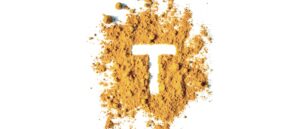If Your Testosterone Test Doesn’t Include These Biomarkers, You’re Wasting Your Money
- By Jennifer Chesak
- Medically reviewed by Peter Hurtubise, D.O.
- August 31, 2023
Fast Facts
- Biomarkers measure of what is happening in your body on a cellular level.
- There are seven biomarkers related to testosterone. If you are experiencing symptoms of low T, these biomarkers can give a better idea of what could be causing low T.
If you’ve had your testosterone levels tested—either through Hone or via your doctor—you’ll probably notice that, in addition to checking your free and total testosterone levels, your blood was analyzed for other testosterone biomarkers. Some of them, like hematocrit you’ve probably hear of before. Others may just seem like a jumble of letters. So let’s break them down.
“Biomarker” is a mashup of the words “biological marker.” A biomarker can refer to any number of medical tests or measurements. Your heart rate is a biomarker, for example. So is each specific line item on a complete blood count.
Doctors use biomarkers to gain a snapshot of what is happening in your body on a cellular level and to assess your overall health. They can provide a glimpse into potential diseases, help monitor your health over time, and be used to diagnose or rule out medical conditions (1). In some cases, a biomarker can help you glean more info about a different test or level, including testosterone.
Here are the biomarkers that are tied to your T levels and why they’re important.
Biomarkers: The Basics
- Biomarkers can help your doctor understand what is happening in your body on a cellular level.
- Biomarkers can help doctors diagnose diseases or monitor your health over time.
Why You Need to Test for Biomarkers
Your testosterone levels are biomarkers themselves. But they don’t always give a complete picture of what’s going on with your T or why you might be experiencing symptoms related to low testosterone, like erectile dysfunction, low libido, fatigue, or infertility.
Case in point: You can have all of these symptoms when your testosterone levels are within the relatively normal range or perhaps just barely outside that range.
That’s why Hone tests a host of testosterone-related biomarkers with its at-home assessment. They give your doctor a better understanding of what’s happening in your body. Think of it as looking at the whole forest rather than just a few trees.
Based on the levels of these biomarkers, your doctor can suggest treatment, which may or may not include testosterone replacement therapy.
What Are Biological Markers for Testosterone?
The following seven biomarkers can help you and your health care provider more accurately assess what’s up with your sex hormones. The normal ranges listed are for men 18 and up.
Prolactin (Normal range: 4.0-15.2 ng/mL)
Prolactin is a hormone secreted by your pituitary gland that affects sperm production (2).
Hyperprolactinemia (HPRL)—that’s doctor-speak for an elevated prolactin level—often causes erectile dysfunction, low libido, infertility, enlarged breasts, and low testosterone.
But HPRL can also occur when testosterone levels are within the normal range.
HPRL can be a red flag for prolactinoma, a noncancerous pituitary gland tumor, or another health condition.
If a test shows that your prolactin level is high, your doctor might prescribe medication or supplements to help dial it down (3). Vitamin B6 inhibits prolactin, but don’t take it (or any supplement) without your physician’s ok (4).
Prolactin Problems
Hone’s assessment measures 8 biomarkers to get a full picture of your hormonal health. It’s fast, simple, and you can do it from home.
ALT (Normal range: 7-55 U/L)
Alanine aminotransferase is an enzyme found mostly in the liver. This biomarker can assess the health of this crucial organ. If your liver is damaged, you’ll have more ALT in your blood.
What’s the connection to T? Low levels of testosterone are associated with suspected non-alcoholic fatty liver disease (NAFLD) (5).
And, although more research is needed, some evidence indicates that raising T levels can lower ALT (6). Healthy lifestyle changes—such as exercising, avoiding tobacco and alcohol products, and eating a nutritious diet—can also lower ALT and help boost liver health.
AST (Normal range: 8-48 U/L)
Aspartate aminotransferase is another enzyme found in the liver. But it’s also in other organs as well as your muscles.
Damaged cells release AST into your bloodstream. So a high level of AST can indicate tissue damage (typically to the liver). Low testosterone may encourage the accumulation of fat in the liver, increasing the risk of NAFLD (5).
Testosterone replacement therapy can help get AST levels back to a normal range (6). Again, healthy lifestyle changes can also help.
ALT and AST
- AST and ALT are liver enzymes. Low testosterone is associated with liver disease.
- Testosterone replacement therapy may lower both AST and ALT, but lifestyle changes can also help.
LH (Normal range: 1.3-9.6 IU/L)
Luteinizing hormone causes Leydig cells in your testes to produce testosterone. But both low and high LH levels can be associated with low T.
High LH levels can indicate that your testes may have been damaged by cancer treatment or excess alcohol consumption. Klinefelter syndrome, a condition in which men are born with an additional X chromosome, can also cause a high LH level.
Low LH, on the other hand, could indicate an issue with your hypothalamus or your pituitary gland.
If your LH level is out of the normal range in either direction, sometimes T replacement therapy can help (7). But treatment will depend on your symptoms and the underlying cause.
The Low-down on LH
- Your body needs LH produce testosterone. Both high and low LH levels can be linked to low T.
- Testosterone replacement therapy can help bring LH levels back to a normal range.
SHBG (Normal range: 13.3-89.5 nmol/L)
Sex hormone binding globulin is a protein mostly produced in the liver. It binds to and carries your sex hormones, including testosterone, through your bloodstream. Your cells and tissues can only use testosterone that is bound to the protein albumin or that is free (called free testosterone) for processes like building muscle, regulating sex drive and mood, and maintaining erections. Testosterone that is bound to SHBG isn’t “active”—meaning it doesn’t have bodily effects in and of itself.
When your SHBG is too high or too low, it affects your body’s access to testosterone. A high SHBG level means that less free testosterone is available for your body to use. A low SHBG level means that more free testosterone is available (8).
In some cases, adding more protein to your diet may lower SHBG levels, but more research is needed to conclude how and if diet can help.
Certain medications can also lower SHBG (9, 10). Weight loss, exercise, a healthy diet, caffeine, and sometimes medications can raise SHBG levels (11, 12, 13).
SHBG: Summary
- SHBG binds to testosterone and carries it throughout the body.
- Testosterone bound to SHBG isn’t active. Lowering your SHBG levels with medication, diet tweaks, or getting more exercise can increase the amount of testosterone your body has available to use.
Albumin (Normal range: 3.5-5.0 g/dL)
Albumin is a protein produced in the liver. It also binds to testosterone, which your cells and tissues can use.
When T is albumin-bound, it’s still somewhat less available than when it’s unbound and free. That’s why checking your albumin level is important: it can help determine how much testosterone your body actually has access to.
A low albumin level could indicate that your diet is poor, or that you have kidney or liver disease. A high albumin level can indicate that you’re dehydrated or eating too much protein. Working to fix an out-of-range albumin biomarker will depend on the cause, but your doctor may suggest dietary changes (14).
All About Albumin
- Albumin is a protein produced in the liver that also binds to testosterone and carries it throughout your body.
- Diet changes may help bring albumin levels back to normal, but if your albumin is low because you have kidney or liver disease, you may need additional treatment.
Hematocrit (Normal range: 38.3-48.6%)
Hematocrit is the percentage by volume of red blood cells in your blood.
If your hematocrit is low, you might be anemic. Or your body may be overproducing white blood cells in response to an underlying health condition.
Low hematocrit is also linked to low free testosterone levels and high SHBG levels.
High hematocrit can be a sign of a heart or lung problem, though it might just be a nod to your zip code: High altitudes can cause high hematocrit.
If your hematocrit is high, your estrogen levels may also be elevated. Testosterone replacement therapy may also cause an overproduction of red blood cells (15).
Treating low or high hematocrit will depend on the cause. Low hematocrit can sometimes be remedied by consuming iron-rich foods or adding a supplement. But you should only add an iron supplement under the guidance of a doctor (16).
Hematocrit at a Glance
- Hematocrit is the percentage by volume of red blood cells in your blood.
- Having a low hematocrit is associated with low T.
How to Test for Testosterone Biomarkers
If you’re interested in testing your testosterone biomarkers along with your T levels, you can order a test via Hone.
All it takes is a finger prick to get a blood sample that you will then mail to our accredited lab. A licensed physician will then review your results and go over them with you, plus they’ll recommend any potential treatments or further testing.
ALT (Normal range: 7-55 U/L)
Alanine aminotransferase is an enzyme found mostly in the liver. This biomarker can assess the health of this crucial organ. If your liver is damaged, you’ll have more ALT in your blood.
What’s the connection to T? Low levels of testosterone are associated with suspected non-alcoholic fatty liver disease (NAFLD) (5).
And, although more research is needed, some evidence indicates that raising T levels can lower ALT (6). Healthy lifestyle changes—such as exercising, avoiding tobacco and alcohol products, and eating a nutritious diet—can also lower ALT and help boost liver health.
AST (Normal range: 8-48 U/L)
Aspartate aminotransferase is another enzyme found in the liver. But it’s also in other organs as well as your muscles.
Damaged cells release AST into your bloodstream. So a high level of AST can indicate tissue damage (typically to the liver). Low testosterone may encourage the accumulation of fat in the liver, increasing the risk of NAFLD (5).
Testosterone replacement therapy can help get AST levels back to a normal range (6). Again, healthy lifestyle changes can also help.
Hone’s assessment measures 8 biomarkers to get a full picture of your hormonal health. It’s fast, simple, and you can do it from home.
The Bottom Line
References
1. Strimbu K, Tavel J (2011). What are Biomarkers?
2.American Society for Reproductive Medicine (2014). Hyperprolactinemia (High Prolactin Levels).
3. Buvat, J. (2003). Hyperprolactinemia and sexual function in men: a short review.
4. Witwit S (2019). The Role of Vitamin B6 in Reducing Serum Prolactin in Comparison to Cabergoline.
5. Yim J, et al (2018). Serum testosterone and non-alcoholic fatty liver disease in men and women in the US.
6. Yassin A et al (2020). Long-term testosterone therapy improves liver parameters and steatosis in hypogonadal men: a prospective controlled registry study.
7. Dandona P, Rosenberg M (2010). A practical guide to male hypogonadism in the primary care setting.
8. Li H, et al (2016). Sex Hormone Binding Globulin Modifies Testosterone Action and Metabolism in Prostate Cancer Cells.
9. Longcope C, et al (2000). Diet and Sex Hormone-Binding Globulin.
10. Wallace A, et al (2003). Short-term effects of prednisolone and dexamethasone on circulating concentrations of leptin and sex hormone-binding globulin in children being treated for acute lymphoblastic leukaemia.
11. Hawkins V et al (2008). Effect of Exercise on Serum Sex Hormones in Men.
12. Kaukua J, et al (2003). Sex Hormones and Sexual Function in Obese Men Losing Weight.
13. Sáez-López C et al (2013). Oleic acid increases hepatic sex hormone binding globulin production in men.
14. Goldman A et al (2017). A Reappraisal of Testosterone’s Binding in Circulation: Physiological and Clinical Implications.
15. Paller C et al (2012). Association Between Sex Steroid Hormones and Hematocrit in a Nationally Representative Sample of Men.
16. Hematocrit Test: MedlinePlus Medical Test (2022).















